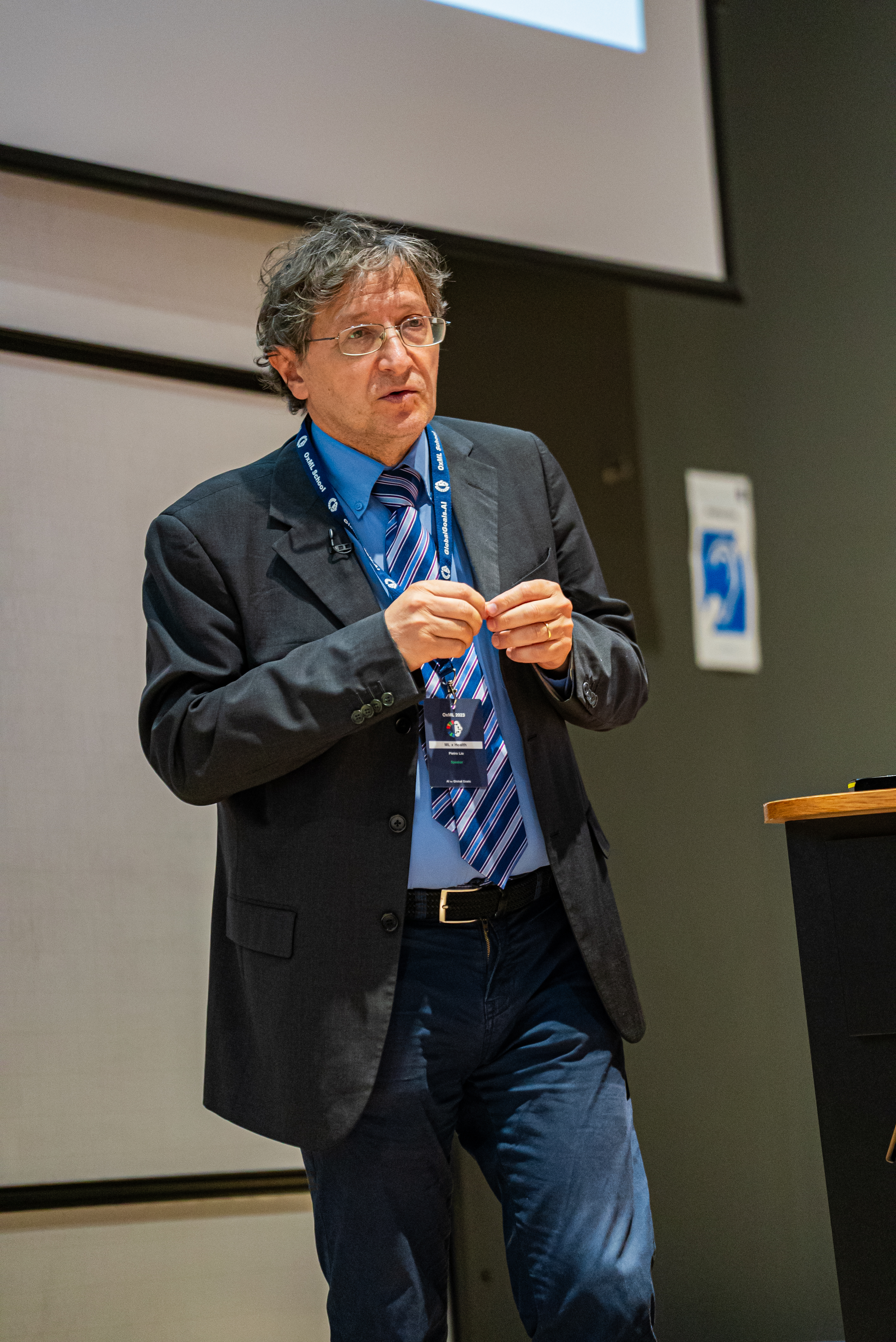
|

|

|
|
Sameer Antani, PhD
Principal Investigator, DIR/NLM/NIH |
Shihua Zhang |
Prof Pietro Liò |

|

|

|
|
Sameer Antani, PhD
Principal Investigator, DIR/NLM/NIH |
Shihua Zhang |
Prof Pietro Liò |
Abstract:
Medical imaging artificial intelligence (AI) and machine learning (ML) applications present opportunities and significant promise for enhancing disease screening, diagnosis, and overall patient care. These advanced algorithms have the potential to revolutionize the medical field by providing more accurate and efficient diagnostic tools. However, impressive performance, effectiveness and reliability of these algorithms are profoundly influenced by the characteristics of the underlying data that they are trained on and operate upon. In this talk, I will delve into the various data characteristics, viz., Volume, Variety, Validity, Variety, and Velocity, that play a crucial role in shaping the performance and evolution of machine learning models in medical imaging and computer vision. I will draw on experiences from my research into screening, diagnostics, and treatment of various cancers, heart disease, and infectious diseases such as tuberculosis, and COVID-19 to explore how these characteristics impact AI/ML performance and reliability.
Dr. Sameer Antani is a Principal Investigator in the Division of Intramural Research of the National Library of Medicine (NLM) at the National Institutes of Health (NIH), USA. His research focuses on novel algorithms in medical imaging and multimodal machine learning (ML) and artificial intelligence (AI), ML/AI for resource-limited and global health settings, and characterizing data and innovations in ML/AI algorithm design for reliable AI predictions with applications in disease screening, diagnostics, risk prediction, and treatment. Dr. Antani is a Fellow of the American Institute for Medical and Biological Engineering (AIMBE), Fellow of Institute of Electrical and Electronics Engineers (IEEE), and Senior Member of the SPIE. He earned his Ph.D. and M.Eng. in Computer Science and Engineering from the Pennsylvania State University and his B.E. (First Class with Distinction) in Computer Engineering from the Savitribai Phule Pune University (formerly University of Pune), India. He is a recipient of several awards for his scientific contributions and research leadership.
Abstract:
Technological advances in spatial transcriptomics are critical for better understanding the structures and functions of tissues in biological research. The combination of intelligent or statistical algorithms and spatial transcriptomics has emerged to pave the way for deciphering tissue architecture. We have made great efforts to advance intelligent spatial transcriptomics and developed a group of STA- tools. Specifically, we first created a graph attention auto-encoder tool STAGATE to identify spatial domains by learning low-dimensional latent embeddings via integrating spatial information and gene expression profiles. Second, we introduced STAligner for integrating and aligning ST datasets across different conditions, technologies, and developmental stages to enable spatially-aware data integration, simultaneous spatial domain identification, and downstream comparative analysis. Third, we designed STAMarker for identifying spatially domain-specific variable genes with saliency maps in deep learning. Fourth, we developed a spatial location-supervised auto-encoder generator STAGE for generating high-density spatial transcriptomics. Fifth, we developed STASCAN for deciphering fine-resolution cell-distribution maps in spatial transcriptomics. We also extended these tools for biological applications in diverse scenarios.
Shihua Zhang received a Ph.D. degree in applied mathematics and bioinformatics from the Academy of Mathematics and Systems Science, Chinese Academy of Sciences in 2008. He joined the same institute as an Assistant Professor in 2008 and is currently Professor. His research interests are mainly in bioinformatics and computational biology, machine learning, and deep learning. His main papers have been published in top journals including Cell, National Computational Biology, Nature Communications, Advanced Science, Genome Biology, Genome Research, National Science Review, Cell Reports, Nucleic Acids Research, JMLR, IEEE TPAMI, IEEE TKDE, IEEE TNNLS, etc. His papers have been selected as “Top Ten Bioinformatics Advances in China” in 2021 and 2022, respectively. He won the Youth Science and Technology Award of China, Ten Thousand Talent Program—Leading Talents (in Scientific and Technological Innovation) and Young Top-notch Talent; NSFC Excellent Youth Fund, CAS Outstanding Young Investigator Program, Lu Jia-Xi Young Investigator Award, Zhongchuang Software Talent Award, National Excellent Ph.D. Thesis Award and so on. Now he serves as a Section Editor of PLOS Computational Biology and an Editor for Genomics, Proteomics & Bioinformatics, etc.
Abstract:
In this talk, I will focus on how AI can support various clinical areas, both at the benchside and bedside levels and considering personalised and population medicine. I will then describe a model of a digital patient twin using graph and hypergraph representation learning and considering physiological, clinical and molecular variables (multi-omics and genetics). Then, I will discuss the impact of diffusion models in drug discovery. Finally, I will discuss explainability methodologies that favour a productive interaction between clinicians and AI.